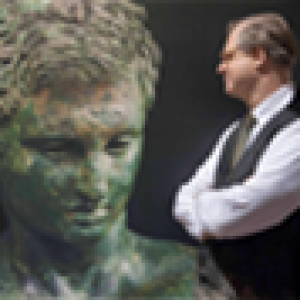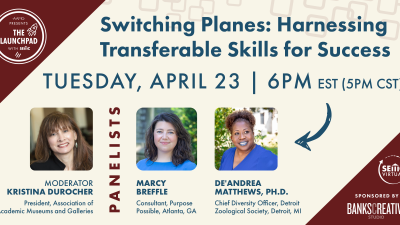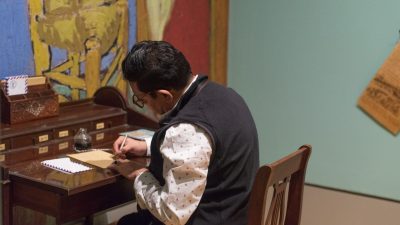“I believe that a desirable future depends on our deliberately choosing a life of action, over a life of consumption. Rather than maintaining a lifestyle which only allows to produce and consume–a style of life which is merely a way station on the road to the depletion and pollution of the environment–the future depends upon our choice of institutions which support a life of action.”
Ivan Illich (1973)
The future of museums looks grim. The museum is overdrawn, and it is not clear where the much needed revenue should come from. Forced into a market where it cannot compete, the museum is forced to overtrade, using scarce resources to chase after a dismayingly wide range of possible revenue sources. Seduced into thinking that bigger is better and that growth is the key to health, the museum is overcrowded, thus destroying the very essence of the museum experience, and undermining the ability to use the museum to bring visitors into contact with masterpieces of culture. So what is the future of our museums? If they cannot survive from earned revenue, nor can they depend any longer on public funding, how should our institutions respond? I would argue that the answer is a mix of several strategies.
First, museums must scale down their ambitions and resist the temptation to confuse growth with health. By restricting its activities to its ‘core business,’ operating costs can also be substantially reduced. Many medium-sized municipal museums remain under visited–large warehouses of city treasures, poorly maintained, and understaffed. Often these same museums pay a large premium just to keep the doors open to snag the few hundred visitors who might wander in on a rainy weekday. But must all museums be open to all the public all the time? Certain museums with a specialist public, rather than chasing increased visitor numbers to cover high operating costs, might do well to consider being open on an appointment only basis, or one day a week. Many cities were caught up in the museum building frenzy of the 1980s and 90s, vying to outdo one another with potlatch-like displays of municipal largess. In the lean years of the early 21st century, perhaps some of these museums can be consolidated, their collections joined with the consequence of greater rotation and greater perceived change? If we pay more than lip service to the ideas of social ecology and institutional evaluation, in the museum environment, surely some museums should be allowed to swallow others, while still others become extinct?
Second, the museum must aim at achieving institutional independence, and to ensuring its long term financial health based on an endowed foundation model, supported by a mix of sources, without becoming dependent on any single revenue stream–financially or administratively. Whether a small community museum or a large tourist destination, the museum can only survive as long as it is managed as an autonomous whole. This means that all the key factors on which the museum stands or falls–an articulated vision, a motivated staff, and a sustainable financial strategy–must be able coordinated within a single, coherent, transparent administrative framework. Museums where the administration is separated from the leadership, where financial decisions are taken independently from personnel decisions, where political influences shape the policies the museum must adopt–are destined to be structurally weak, ineffective, and fraught with inevitable conflicts of interest[i]. The importance of operational autonomy and a transparent decision-making structure cannot be underestimated as a key factor in the museum’s to ability respond flexibly to change. Moreover, the better managed the museum, the more likely that it can fulfill the promises it makes to the many stakeholders necessary to support the museums activities.
Skip over related stories to continue reading articleThird, the museum should return to a focus on its core values–Joseph Veach Noble’s “five fingers”–in the interests of generating a slowly growing base of users, not one-time visitors. It should look to the library –or the piazza–to provide a model of use. In the ecology of museums, each museum should be encouraged to find its “niche.” Those who have well-trained and motivated educational staff should use them to advantage to create programs for the schools, those over-stocked with scholars should research and publish. Kenneth Hudson always argued that the museum was in fact more like a private club than a disco, that its ambitions should remain modest and its financial health based on its membership base–its users. I would also argue that a museum’s future is also based on its specificity–its collections. Like a library, a museum is a resource that should serve a broad base of interested and informed users. Like a piazza, it is a place that should sustain the broadest possible range of activities related to the experience and enjoyment of the museum’s collections.
The museum must return to its core values and deliver on its core skills. The museum must be home to collections and to learning from those collections. The museum “is a place where one learns that the life of the mind is a pleasure,” in the words of Jonathan Miller, “an institution for the prevention of blindness,” according to Nelson Goodman, and “a permanent storage battery” for Sherman Lee. The museum must look towards the creation of ‘lightweight’, flexible projects that take advantage of its unique collections, not heavyweight blockbusters that disrupt the priorities and distort the identity of the museum. In the future, the museum must return to being a learning hub–not a “destination attraction.” It must commit itself fully to the values of quality, diversity and sustainability in every aspect of its work. Then, and only then, will museums be able to remain a vital societal resource–and a multifaceted piazza for the learning society.
See James Bradburne’s Voices of the Future interview.
James M. Bradburne is an Anglo-Canadian architect, designer and museologist who has designed world expo pavilions, science centres and international art exhibitions. He was educated in Canada and in England, graduating in architecture with the Architectural Association and taking his doctorate at University of Amsterdam. Over the past 20 years he has produced exhibitions and organised research projects and conferences for UNESCO, national governments, private foundations and museums in many parts of the world. He was director of design for the newMetropolis (now NEMO) science centre, director general of the Museum for Applied Art in Frankfurt, and from 2006 until 2015 was the director general of the Fondazione Palazzo Strozzi, responsible for turning Palazzo Strozzi in Florence into a dynamic cultural centre.









Comments